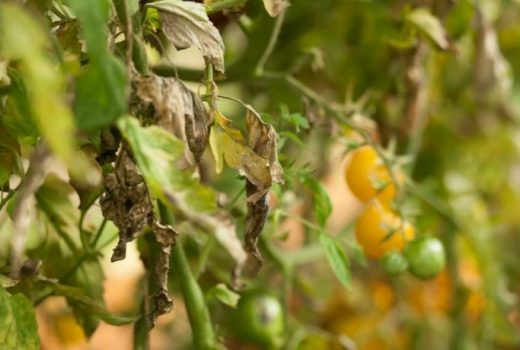Tomato plants are extremely vigorous and almost every new gardener wants to grow them. Tomato plants come with several pests and diseases that can easily be avoided by practicing some preventive gardening techniques. Also, tomato leaves curl for various reasons, which is why you should learn the causes of it so that you can get rid of the problem.
Why do tomato plants, and other plants, develop curling leaves?
There are basically two reasons:
- Lack of Water – When plants don’t have enough water they wilt and the leaves curl upwards.
- Lack of Nitrogen – When plants don’t have enough nitrogen in their soils, they too wilt and the leaves curl upwards.
Tomatoes are more sensitive to both lacks of water and nitrogen than other plants. The good news is, there are several things you can do to fix it.
Environmental Cause of Tomato Leaves Curling:
Curling leaves can also be caused by environmental factors mentioned below.
- If the soil is heavy, the roots may be struggling.
- Also there is oxygen problem for plants having sandy or too much wet soil.
- Acidic soil can not deliver proper quantity of calcium to roots.
- The roots may not get enough magnesium if the soil is too alkaline.
- For compacted soil, the roots can not get required air.
- If the air is too dry, the roots may not get enough water.
How to Fix them?
Leaves curling are an important indicator of plant stress and indicate one or more problems: not enough light, too much water, or too much nitrogen, phosphorus, or potassium.
If your tomatoes are growing well but the leaves curl, try these tips.
- They need plenty of light. Grow them in full sun.
- At least 5 to 6 hours of sun a day is necessary.
- Water them deeply every week.
- Tomatoes need 12 to 24 inches space between plants.
- Use a liquid fertilizer.
Tomatoes grow best on sandy loam soil, which is a mixture of sand, silt, and clay. Sandy loam soil drains well, allowing adequate air circulation.
How do you fix a stressed tomato plant?
Tomato plants have three kinds of leaves: shoots, stems, and “true” leaves. The leaves on the shoots are thin, irregular, and falling off the plant. The leaves on the stems are thick and green. The true leaves have a complex structure: a leaf blade, a leaf stalk, and a leaf axil. The leaf stalk attaches to the stem at the petiole, and the leaf blade attaches to the stalk at the lamina. The axils are where the leaf blade attaches to the stem.
Stressed tomato plants have leaves that are sticky or slimy. The leaf blade is separated from the leaf stalk, and the leaf blade is responding by curling. Sometimes a stressed tomato plant has yellow spots on the leaves.
Here are some things you can do:
- Remove any leaves that have become deeply curled.
- If the plant has yellow spots and leaves, try watering the plant less.
- If the plant still has yellow leaves, remove those, too.
- If the plant has no yellow leaves and has curled leaves, check for nitrogen and phosphorus in the potting soil.

